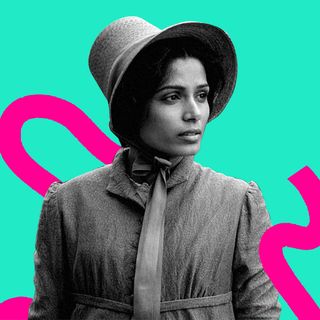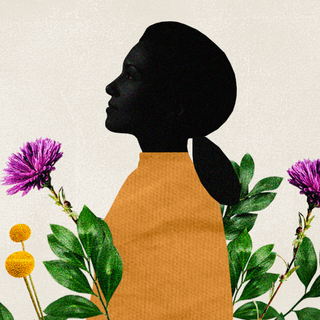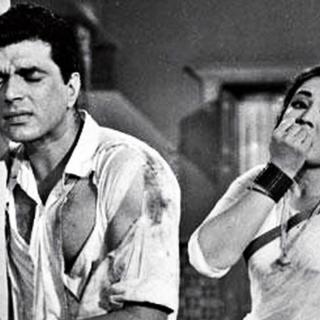
How Pop Culture Paints an Unhealthy, Unsustainable Picture of Friendships
We feel guilty for not being good friends, but at the same time, we’re convinced that our friendships aren’t fulfilling enough.

I doubt there has ever come a moment in my adult life when I could be sure my friends will drop everything and fly to my side if I were to find myself unceremoniously dumped on a weekday afternoon by someone I just started seeing a few weeks ago. In all probability, I wouldn’t do that for them either — at least, not in the middle of a workday, and especially not if I don’t have the emotional bandwidth to engage.
Yet, time and again, TV shows and movies from The Bold Type to Sex And The City have taught people to expect exactly that from real-life friendships.
T., 26, is presently experiencing this, as most of her friends are getting married one after another. All of them expect that “if I love them, I’ll show up… [But] If I do that, I will get fired and be broke.” She believes unrealistic portrayals of friendship on-screen are to blame for her turmoil. “Bunny and Naina drop everything to attend Aditi’s wedding for days on end in Yeh Jawaani Hai Deewani. The women in Four More Shots Please! drop everything and go to Istanbul — and then, also make it to a destination wedding… Like, do you guys not have jobs?”
Besides making it difficult to live up to unrealistic expectations of friendships, pop culture also conditions us to subject our friends to the same. “When I was going through some major emotional and mental issues, I reached out to a very close friend, and she… [explained] that she can’t be emotionally available for me because she couldn’t handle it,” says Amena Azeez, who is currently in her thirties. To her, it “came as a rude shock [since] I always believed friends will be available for me at any time of the day — like that ‘3 a.m. friend who will [always] pick up the phone and be there for you, you know?'”
Our cultural obsession with such portrayals of friendship — through shows like Seinfeld, F.R.I.E.N.D.S, and How I Met Your Mother — also perpetuate a notion of “friendship monogamy.” “Because I spent so much time being enamored by TV friendships, I thought that my real-life friendships were supposed to look just like them… I pushed for my friends to be as close as possible. I wanted us to tell each other everything, to be involved in all the same clubs and activities, and to only want to spend time with each other,” Sarah Halle Corey wrote in early 2020.
Related on The Swaddle:
How Friendship Evolved Under Lockdown Amidst Cathartic Group Chats, Food Parcels
Against the yardstick of rationality, Corey’s behavior seems stifling — perhaps, obsessive even. In time, she saw it too. “[T]hat’s not a healthy way to live, and it’s unrealistic to expect people to maintain it… I soon discovered that I didn’t have the energy to keep up with the intensely close friendships that I thought I wanted. I wanted more alone time than the characters in my favorite TV shows seemed to want… The more time I spent trying to recreate Central Perk in my own hometown, the more exhausted I became,” Corey notes.
The notion of “friendship monogamy” suggests that one set of friends is ideal for every situation. From being the best listeners to the go-to people for advice on finance, law, social media, and politics to, sometimes, even being the romantic partner one always desired — this group can provide it all. This depiction puts pressure on individuals to don multiple hats, rather than allowing them to be flawed, or share different dynamics with different friends. In the real world though, most people have scattered, individual friends rather than one close-knit circle comprising people who never seem to grow apart, and spend a greater part of their lives in the company of one another.
Further, pop-culture-propagated ideas of what friends are supposed to be like also prompt us to categorize our friends into neat trope boxes like the ones that exist onscreen — the “romantic one,” the “funny one,” the “punching bag,” or the “cleanliness freak.” In the process, we forget to appreciate, or even grasp, their complexities — while discouraging their personal growth by ridiculing them for “changing,” should they dare to evolve out of the boxes we assigned to them.
Moreover, “none of these shows value the need for boundaries in any friendship… perpetuat[ing] the falsehood that friendships should know no bounds,” writes Magenta Porter. Highlighting the impracticality involved in the mix, she adds, “Almost every night of the week they are out at some fancy party or sprawled across the couch with their mates, with takeaway boxes and wine for effect. In reality, not even the most extroverted people among us could live like this.”
Basically, the unrealistic portrayals of friendship in these shows often contribute to people’s formative notions of adult friendships. The result: many of us have been conditioned to measure our friendships against impractical, and often unfair, markers – under the impression that if our real-life friendships don’t mirror the ones we see on TV, there’s something wrong with our friendships, or worse still, with us.
Related on The Swaddle:
Is This Normal? “I Imagine Friendships With Fictional Characters”
Despite acknowledging how unsustainable pop culture’s version of friendships is, being primed to treat them as ideal for years, leaves us with an enduring sense of longing. “[T]he fact I can keep in touch with my friends online makes me feel far less guilty when I can’t find the time to see them, and there’s a level of intimacy afforded to online interactions that’s sometimes hard to conjure face to face. Despite this, it can be hard not to feel bad about the state of our social lives,” reads an article in The New Statesman.
The unrealistic depictions also make us feel, on the one hand, guilty for not being good friends and, on the other, that our friendships aren’t fulfilling enough. While fiction has no ethical obligation to be rooted in reality, it does impact the real lives of real people, setting up real-life friendships for failure — at least, until the realization that struck Corey makes its way to them, if at all it does that is.
Perhaps, it is the sheer lack of non-majority representation in pop culture for decades that has led us to overlook that, to be the kind of friend we see onscreen, one needs to have a myriad of privileges — financial, socio-political, emotional, neurotypical, able-bodied — that not everyone does. “No one tells us that, just like romances, there is an entire narrative that is created to glamorize friendship in ways many won’t be able to emulate in real life,” says Amena.
Maybe it’s time to retire some of the been-there-done-that tropes and create fresher, more diverse narratives of friendship. Comforting as the ones we’ve grown up watching might be, perhaps, it’s time to break out of the cast that was molded in the last century. In this digital age, the nostalgia-inducing pop culture will continue to be just an OTT login away while representations of non-classic dynamics of friendship will, perhaps, make it easier for us to tailor our expectations of people we love and care for. “I realize now that people come and go, and only a very few stay around; sometimes, no one does. But with that realization [comes] acceptance, and it’s less upsetting to me [now] when people fade away,” one Reddit user wrote.
Instead of creating unrealistic expectations, perhaps, we’ll learn to cherish the true nature of real-life friendships rather than mourning what they can never be. “…it can be quite beautiful. Friends leave, but you can also create new relationships at any point in your life. If I reach 90, I would be happy to look back on my life and see hundreds of different types of friendships — some long-lasting; others, short and ephemeral,” commented another user.
Devrupa Rakshit is an Associate Editor at The Swaddle. She is a lawyer by education, a poet by accident, a painter by shaukh, and autistic by birth. You can find her on Instagram @devruparakshit.
Related


How Being More Self‑Compassionate Can Help Us Feel Less Bored
